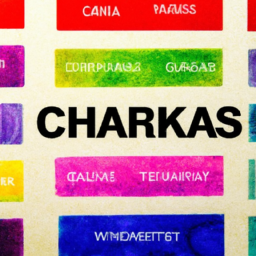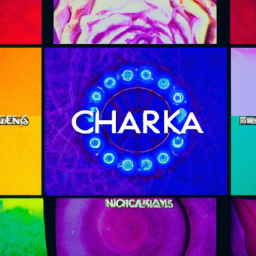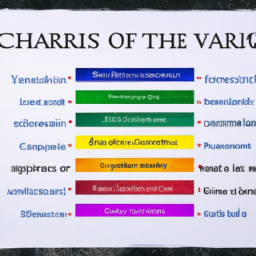Chakras, in Hindu and yogic traditions, are believed to be energy centers that exist within the body. The word ‘chakra’ comes from the Sanskrit language and means ‘wheel’ or ‘disk’ - representing the spinning energy and vitality within us. These chakras are located along the spine from the base to the top of the head and are associated with different physical, emotional, and spiritual aspects of our lives. In this article, we will explore the seven main chakras and what they do.
Root Chakra (Muladhara)
The root chakra is located at the base of the spine and is associated with the color red. It represents our basic survival needs, such as food, shelter, and safety. When this chakra is balanced, we feel secure, grounded, and stable. An imbalance in this chakra can manifest as fear, lack of confidence, and difficulties with money and career.

Sacral Chakra (Svadhisthana)
Located just below the belly button, the sacral chakra is associated with the color orange and is responsible for our creativity, emotions, and sexuality. When this chakra is balanced, we feel passionate, open, and connected to our creative energy. An imbalance in this chakra can result in feelings of guilt, lack of creativity, and sexual dysfunction.

Solar Plexus Chakra (Manipura)
The solar plexus chakra is located just above the belly button and is associated with the color yellow. It is responsible for our self-esteem, confidence, and willpower. When this chakra is balanced, we have a strong sense of self and are able to take control of our lives. Imbalances in this chakra can lead to low self-esteem, lack of motivation, and digestive issues.

Heart Chakra (Anahata)
The heart chakra is located in the center of the chest and is associated with the color green. It represents love, compassion, and forgiveness. When this chakra is balanced, we are able to give and receive love freely. An imbalance in this chakra can lead to feelings of bitterness, jealousy, and difficulties in relationships.

Throat Chakra (Vishuddha)
The throat chakra is located in the throat and is associated with the color blue. It is responsible for our communication and self-expression. When this chakra is balanced, we are able to effectively communicate ourselves and our needs. An imbalance in this chakra can result in difficulty expressing ourselves, feeling unheard, and throat/shoulder tension.

Third Eye Chakra (Ajna)
The third eye chakra is located between the eyebrows and is associated with the color indigo. It represents our intuition and inner wisdom. When this chakra is balanced, we have a clear perception and understanding of ourselves and the world around us. An imbalance in this chakra can lead to a lack of direction, confusion, and poor decision-making.

Crown Chakra (Sahasrara)
The crown chakra is located at the top of the head and is associated with the color violet. It represents our spiritual connection and higher consciousness. When this chakra is balanced, we are in tune with our higher self and feel a sense of peace and connection with the universe. An imbalance in this chakra can result in feelings of disconnection, lack of purpose, and spiritual emptiness.

Understanding and balancing our chakras can greatly improve our overall well-being. By becoming aware of these energy centers and their functions, we can make necessary changes to align our physical, emotional, and spiritual selves. Meditation, yoga, and essential oils are just some of the many practices that can help balance our chakras. So take a moment to tune in to your chakras and see what they are trying to tell you.





So interesting!
This is a great overview of chakras and how they work!
I had no idea!
This is a really helpful and insightful article!